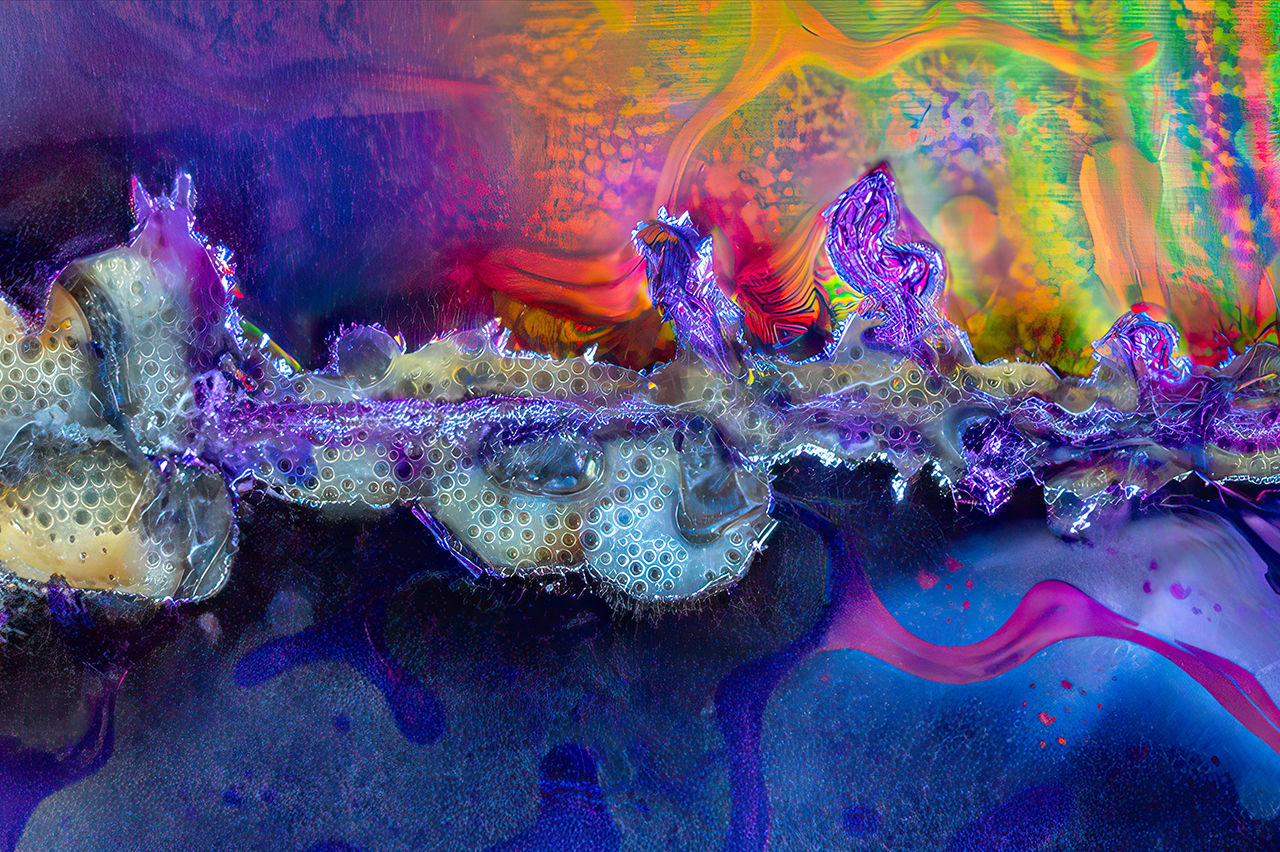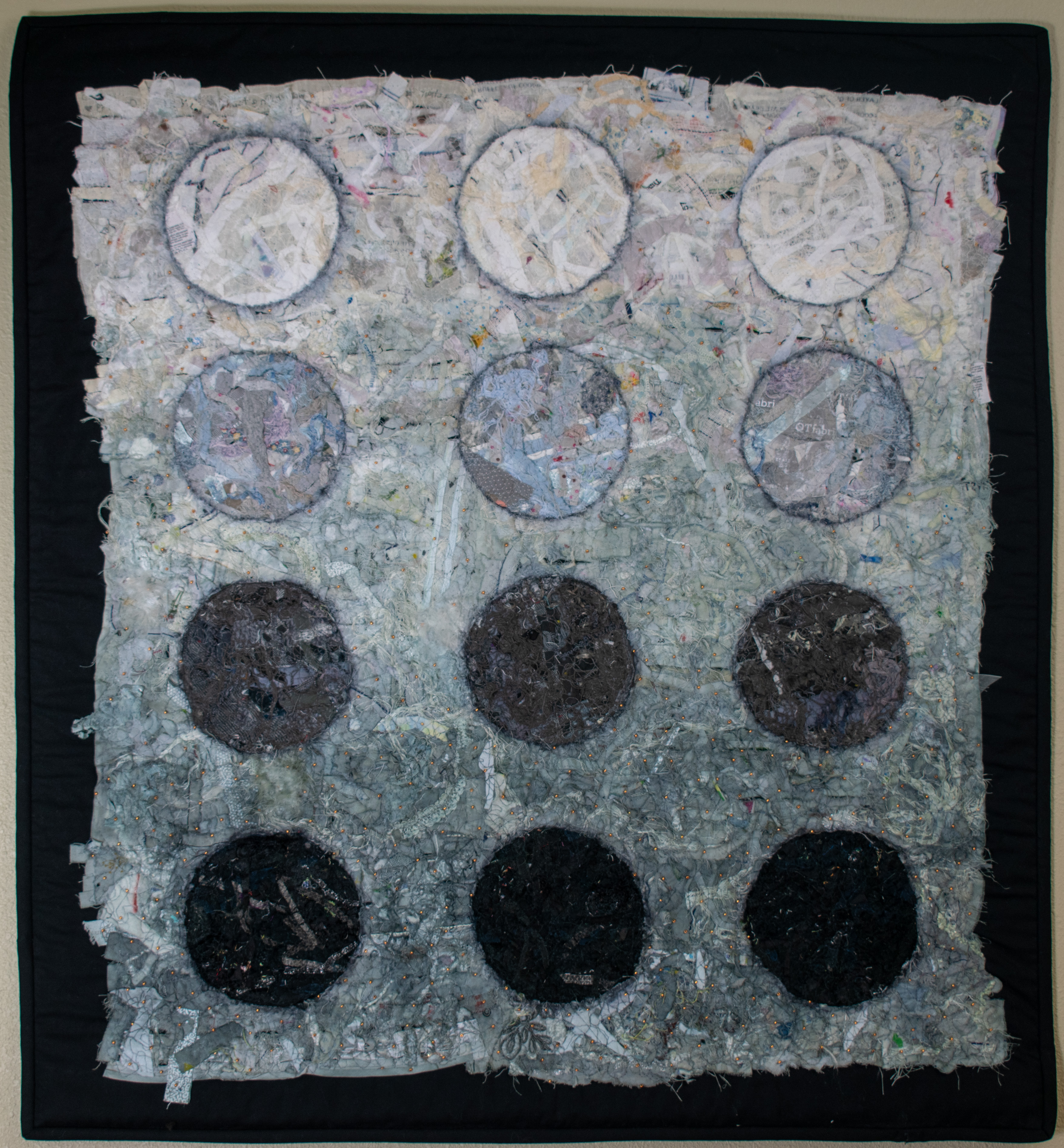This year marks the 16th Annual National Juried Exhibition at the Willard Arts Center. Artists from across the United States can submit up to three artworks for consideration. The Juror is different every year in order to provide a fresh perspective on the selection process, and over the years we’ve welcomed arts administrators, educators, practicing artists and collectors into the role. No matter who the juror is, however, the exhibition always provides a fascinating insight into contemporary art in America today.
Alongside more traditional paintings, you will undoubtedly find some pieces that are more unconventional or even perplexing. This can be off-putting to some of our visitors, but I’m here to tell you that it’s perfectly acceptable to find art a little odd sometimes, or even to dislike it, and that’s all part of the experience.
This year, after selections had been made, I reached out to all of the artists and asked them to provide some more information about their work. This could include details of their technique or the inspiration behind the imagery. I wanted to be able to answer questions in the galleries and hopefully encourage people to look closer at something they may have otherwise disregarded. I was completely overwhelmed with responses! Turns out, artists love to talk about what they do! In this article, I share some of my favorites in the hopes that you, too, may take a second look.
Rift Zone by James Neeley is a fascinating work. I was drawn to it initially because of the vibrant colors and unusual textures. The artist had labeled it as a “macro photograph,” but I didn’t really know what this meant until he explained it. Turns out, this is a microscopic photograph of the burn pattern in a CD! He puts a CD in the microwave for a couple of seconds, which burns the thin layer of aluminum that is sandwiched between layers of plastic, then examines it for interesting patterns using a high powered camera lens.

This photograph shows an area that is just 3.5mm wide. Neeley describes the experience as being like “exploring a new world” and compares it to his work in landscape and nature photography.
Dementia by Amy Clements is an example of an artwork that didn’t stand out to me at first glance. However, her description of the piece was so meaningful that I went back and looked again. The subtle layers of symbolism in this fiber art piece are incredible.

Clements lost her grandmother a few years ago to dementia. In this piece, she created new fabric from thousands of tiny white scraps and threads. After making the base, she dyed it ombre from white to gray to show that while someone seems to fade away from dementia, they are never fully gone. The large circles represent memories going from white (intact) to black (gone), while small beads symbolize the “little golden moments” when a memory is recalled or the person’s full personality comes back for just a fraction of time.
The variety of fabrics and other materials used throughout shows the complexity of an individual and everything that makes them who they are. Clements’ grandmother is the one who initially taught her to quilt and she credits her with her love of fiber arts today. The background and emotion from the artist about this work together with my own personal connection to its story means that this one is going to stay with me for a long time.
The Wild Bunch by Chaune Turner is definitely one that will cause some visitors to say, “Huh?” when they view the exhibition for the first time! But there’s something about it that I love. Turner has always been interested in collage as a medium, but has only been focusing on it for the past year or so.

She uses vintage photographs from books and magazines to create humorous and sometimes absurd compilations that look like they were always supposed to be that way. In this particular piece, she started with an article in an old Western book titled “Butch Cassidy and the Wild Bunch.” Since the cowboys in the book looked “tough and gruff,” she strived to edit them to make them funny and decided on mushrooms since they are “grown out in the wild like cowboys.”
Turner’s main goals are to make people smile and to inspire them to look twice at her art. I very much agree with her sentiment that artists don’t have to be tortured or suffering to make emotional or impactful art and I hope that seeing this piece will make you smile, too.
Hearing from the artists as I put together this exhibition was eye-opening for me. It completely changed how I looked at each artwork and definitely made me think more deeply about the meaning, effort, and creativity behind each one. I encourage you to come to the galleries with an open mind to explore the art for yourself and don’t worry, it’s okay to think it’s weird.